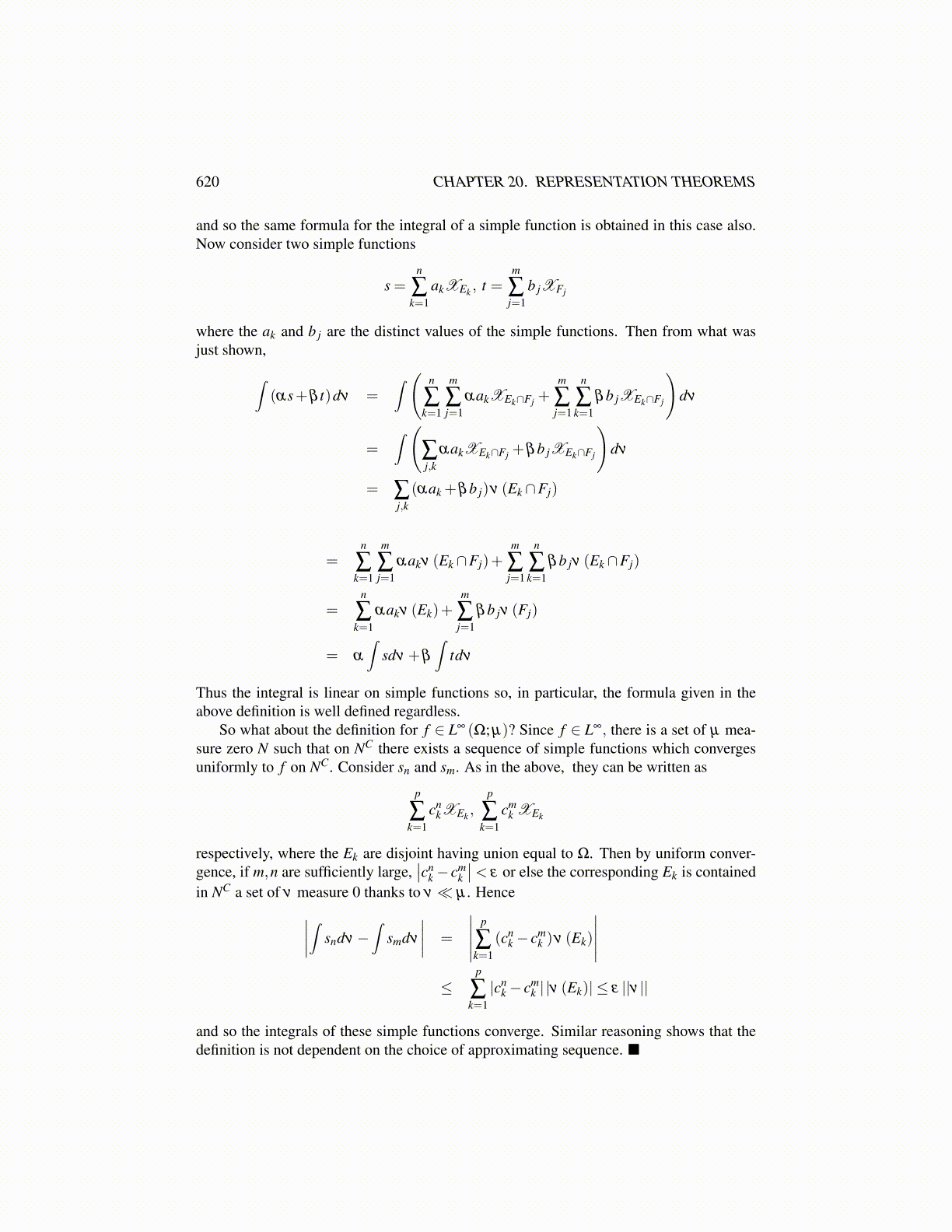
620 CHAPTER 20. REPRESENTATION THEOREMS
and so the same formula for the integral of a simple function is obtained in this case also.Now consider two simple functions
s =n
∑k=1
akXEk , t =m
∑j=1
b jXFj
where the ak and b j are the distinct values of the simple functions. Then from what wasjust shown,
∫(αs+β t)dν =
∫ ( n
∑k=1
m
∑j=1
αakXEk∩Fj +m
∑j=1
n
∑k=1
βb jXEk∩Fj
)dν
=∫ (
∑j,k
αakXEk∩Fj +βb jXEk∩Fj
)dν
= ∑j,k(αak +βb j)ν (Ek ∩Fj)
=n
∑k=1
m
∑j=1
αakν (Ek ∩Fj)+m
∑j=1
n
∑k=1
βb jν (Ek ∩Fj)
=n
∑k=1
αakν (Ek)+m
∑j=1
βb jν (Fj)
= α
∫sdν +β
∫tdν
Thus the integral is linear on simple functions so, in particular, the formula given in theabove definition is well defined regardless.
So what about the definition for f ∈ L∞ (Ω; µ)? Since f ∈ L∞, there is a set of µ mea-sure zero N such that on NC there exists a sequence of simple functions which convergesuniformly to f on NC. Consider sn and sm. As in the above, they can be written as
p
∑k=1
cnkXEk ,
p
∑k=1
cmk XEk
respectively, where the Ek are disjoint having union equal to Ω. Then by uniform conver-gence, if m,n are sufficiently large,
∣∣cnk− cm
k
∣∣< ε or else the corresponding Ek is containedin NC a set of ν measure 0 thanks to ν ≪ µ . Hence∣∣∣∣∫ sndν−
∫smdν
∣∣∣∣ =
∣∣∣∣∣ p
∑k=1
(cnk− cm
k )ν (Ek)
∣∣∣∣∣≤
p
∑k=1|cn
k− cmk | |ν (Ek)| ≤ ε ||ν ||
and so the integrals of these simple functions converge. Similar reasoning shows that thedefinition is not dependent on the choice of approximating sequence.